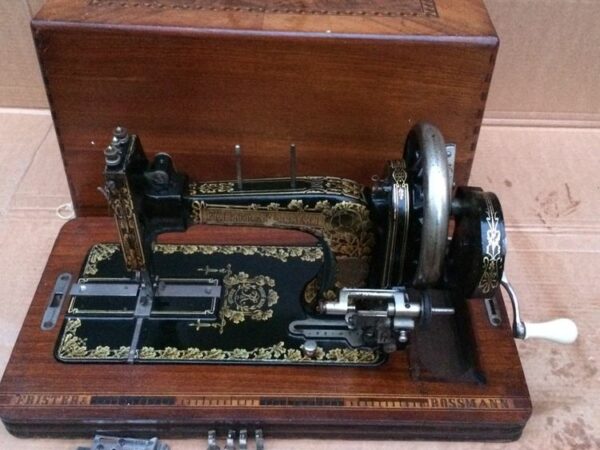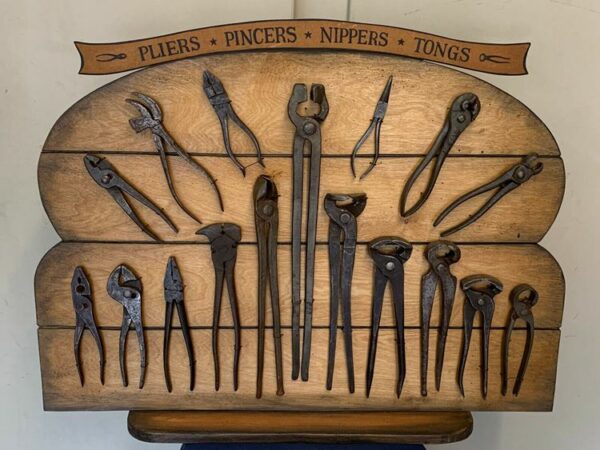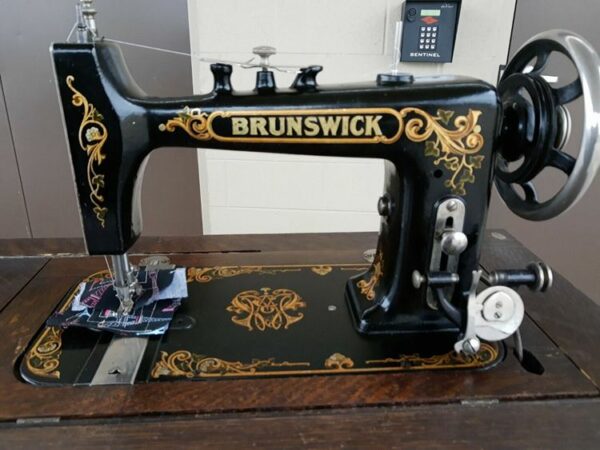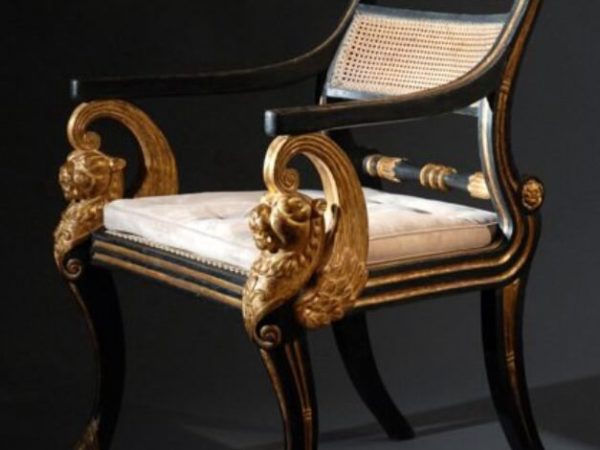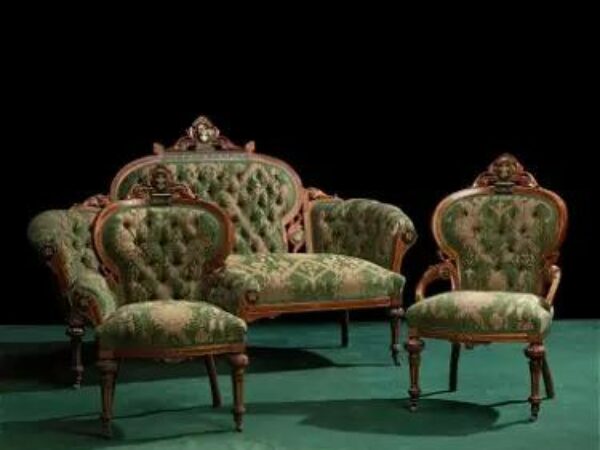Did you know that chairs have been around for almost five millennia? They were first made by the ancient Egyptians – and have even been found in tombs dating to 2680BC! Chairs were only used by royalty in those times – and were ornately carved masterpieces that were much lower on the ground than we’re used to sitting today.
When it comes to your dining room, you can opt to get some antique dining chairs that will lend a unique perspective to both your dining room and your home! From simple to ornate, from upholstered to wooden backs: Which ones are right for you? There are many styles of antique dining chairs, but which ones will look awesome when you’re setting them up in your home? Let’s take a look.
Table of Contents
Antique Dining Chair Styles
There are many different styles of antique dining chairs spanning from the different centuries and eras that they were designed and manufactured.
1. Queen Anne Chairs
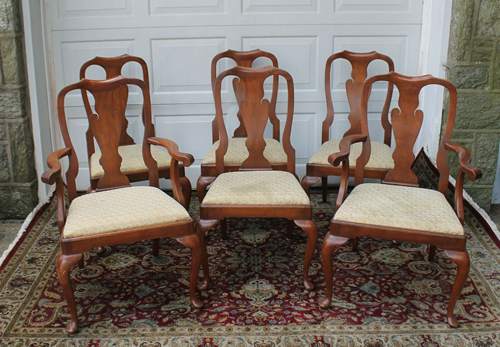
Designed and made during the Queen Anne era, – early 18th century – these chairs are simplistic and elegant, with one thick wood stripe down the back on the chair, arms and cabriole legs.
2. Victorian
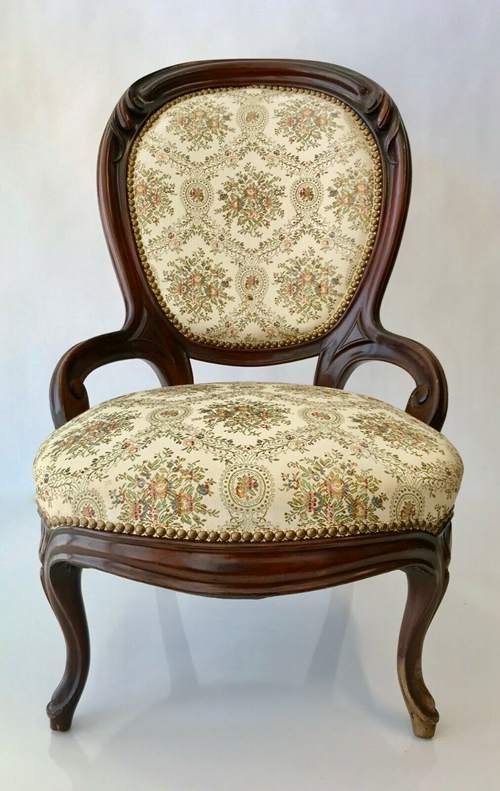
Designed during the Victorian Era (1837 to 1901), these antique dining chairs are usually mahogany, upholstered and boast two different types of legs: the front legs are tapered, while the back legs are sable. There are different types of antique Victorian era chairs, but these are the most common – and can still be found in sets today.
3. Georgian
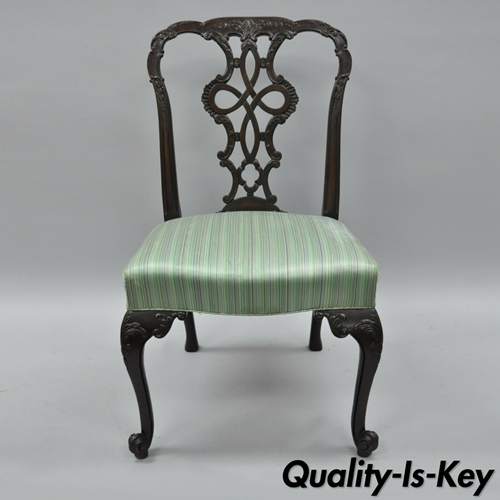
Georgian antique dining chairs are designed in the Georgian Era (1714 to 1837). Most of the major English designers such as Chippendale, Sharaton and Hepplewhite hail from this era, which is why their designs can also be known as Georgian. These chairs are usually luxuriously upholstered, have cabriole legs and ball and claw feet.
4. Hepplewhite
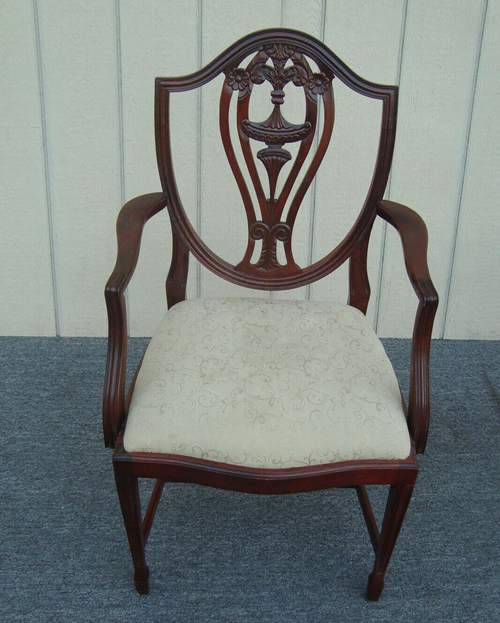
Hepplewhite antique dining chairs were designed by George Hepplewhite in the mid-late 18th century. Hepplewhite chairs are quite uniquely elaborate and elegant. With simple and graceful lines, straight legs and feet, but elaborate backs, Hepplewhite chairs tend to be armless.
5. Chippendale
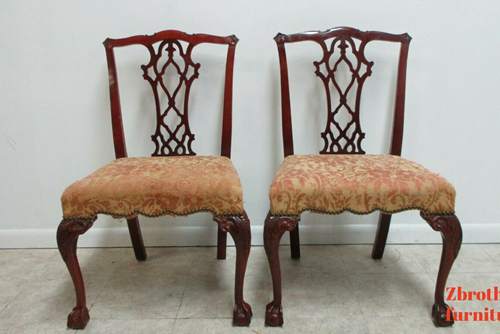
Designed by Thomas Chippendale in the late 18th century, these antique dining chairs are very, very famous – as is the designer himself. Chippendale chairs are handmade, which is why they usually have some irregularities, especially in the carvings from one side to the other. Chippendale chairs have ball and claw feet, cabriole legs and dark woods.
6. Shaker Chairs
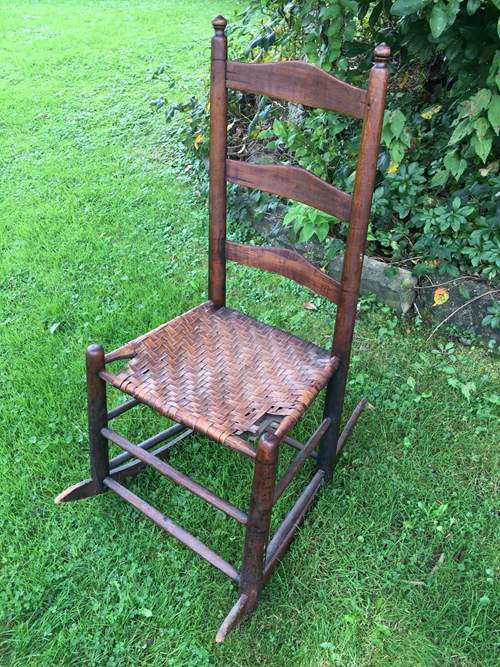
Also known as Ladderback or Pilgrim Slat chairs, these were all the rage in the American Colonial Era. In the 1600s, Shaker chairs were quite simple: with stiles, spindles and flat slats for the chair back. However, with time, the flat slats were replaced with a ladderback.
7. Windsor Chairs
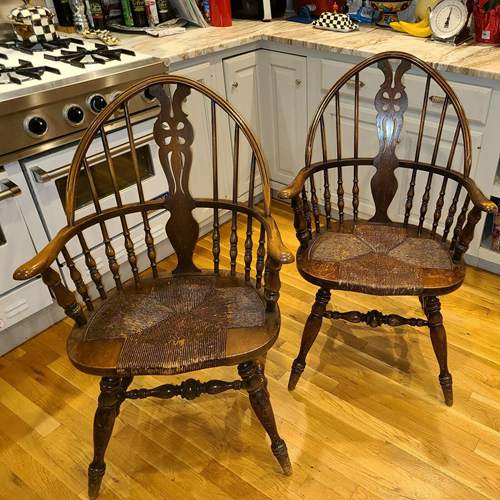
These hail from the 18th century in England, but this style also became popular across the pond in the United States. These antique dining chairs were made from many different types of wood such as maple, cherry and mahogany. They are characterized by a wooden seat, many spindles, a hooped back and splayed legs.
8. Sheraton
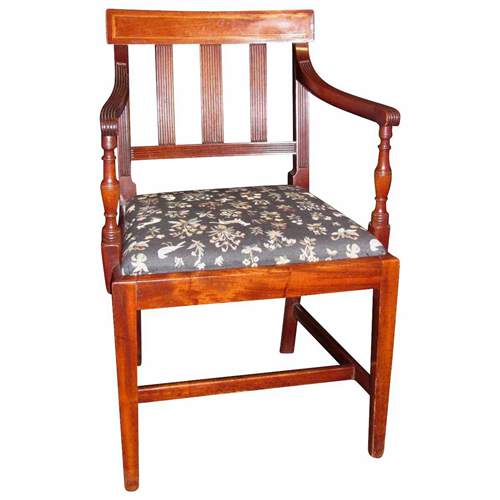
Thomas Sheraton was a famed London furniture designer whose designs still prevail today, although very few of his original pieces survive. Sheraton chairs are quite simple – with his later work being quite severe. These chairs have contrasting inlays which use different woods, with the famed ones being mahogany and beech. These antique dining chairs usually have straight legs that taper at times.
How to Value Antique Dining Chairs
You might have some antique dining chairs that you don’t really know the value of. Also, you might think something’s old and antique and save it for years, while throwing away an old chair into the trash. What if the chair you threw away is the real antique whose price can set you up for a few years? Imagine that!
That’s why you need to know how to value antique chairs. A lot of people with old furniture may not know that they’re tossing away an original Queen Anne chair, or an original Sheraton. What then? Usually, there are a few distinct features that are used to determine the value of antique dining chairs. These are:
- Age – The older the chairs, the more valuable it is. If you have dining chairs circa 1770, you might have hit the jackpot in terms of value!
- Imperfections – Imperfections in antique dining chairs can lower the value of the chair. It’s best to examine the chairs and make note of any and all imperfections – be it scratches and dents or irregular carvings.
- Wood – What type of wood is it? Does it have inlaid veneers of different types of wood? This could be a feature to help value the chair.
- Manufacturer Markings – Sometimes the craftsmen who made the chairs leave some sort of markings. You might want to take some pics of these – plus of the whole chair – and send the pics for appraisal. Some museums or auction houses such as Sotheby’s may be keen to help you appraise it and determine its correct value.
The value of any antique furniture falls if you spruce it up to make it look nice – unless, of course, you’re a professional restorer who has worked with period pieces from specific eras and designers before. Don’t be tempted to varnish your chair: leave it as it is to get a higher value.
Once you’ve explored the chair thoroughly, you can opt to get it appraised at a local antiques shop or wait until an antique fair passes through your town and you can get a professional appraiser to take a look.
Once this is done, you can either keep it or opt to sell it for
- Retail value – This is the value decided by you and the buyer of your antique dining chairs. This figure must be agreed upon by both you and the buyer.
- Wholesale Value – The wholesale value is what you get when you sell to an antiques store, and may be up to thirty percent lower than the value you get from a retail sale.
- Auction Value – Depending on the make, design and period of the antique dining chair, you might get the best value at an auction.
How to Identify Antique Dining Chairs
Do you have dining chairs that your grandmother brought over when fleeing from World War I? They could be the real deal! Antique dining chairs are usually quite distinctive in appearance – so even if you put one next to its replica, you’ll still be able to tell them apart. This is because wood shrinks over time, thus loosening joints. Wood also acquires a shiny patina with time, as age and long-time usage tend to wear the embellishments and hand carvings until they’re smooth!
Here’s how you can identify antique dining chairs:
1. The Period
One key means of identification of antique dining chairs is to determine the period it was made. You can do this by looking for specific identification features – which show the era it was made.
Chairs from different monarch reigns can be told apart if you have the right identification charts – so if it’s Victorian, Louis XIV, Louis XV, Georgian, Queen Anne, Windsor or Neo-Classical Empire style: you’ll know it by the style and the embellishments.
2. The Wood Types
Another way to identify antique dining chairs is by checking out the wood used in the making of the chairs. Specific designers preferred working on select woods – local and imported. Most antique chairs were made from woods such as walnut (Age of the Walnut), hickory, cherry, ash, rosewood, elm and bird’s eye maple.
Some even used African mahogany, which was imported into Europe at that time. Did you know that Windsor chairs – created in the century from 1730 to 1830 were made with a combination of woods? Craftsmen would use hickory and maple, or ash and hickory together to craft these chairs.
3. Designer Features
Antique dining chairs can be told apart by the specific embellishments and leg styles used by designers. Hepplewhite, Sheraton and Chippendale all have specific styles which are easy to identify. Chippendale chairs are usually have a dark wood finish, yoked top railing, upholstered seat and cabriole legs. Windsor chairs have many spindles, wood seats, distinctive hooped back and wide-splayed legs. Sheraton chairs have slim and straight legs, and have a neoclassical look. In this manner, you can identify different designers, which helps to determine the identity of the chair.
4. Leg Shape
Another way to identify antique chairs is via the leg shape. Chippendale and Queen Anne chairs have S-curved cabriole legs. Other types of legs include the spider, tapered, straight, saber or spiral legs. Some designers had only one style of legs that they used in most of their designs. Chippendale, for example, used the Marlborough leg.
5. Feet
Did you know a dining chair can be identified by its feet? Chippendale chairs have ball and claw feet, Queen Anne chairs have tapered Federal legs and feet, whereas most antique dining chairs in the United States have an eagle claw holding the ball!
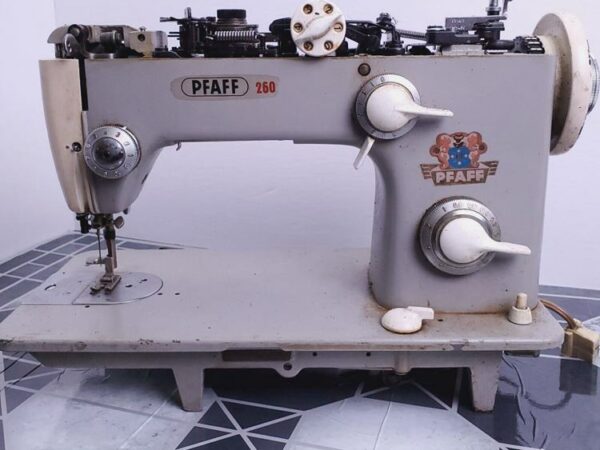
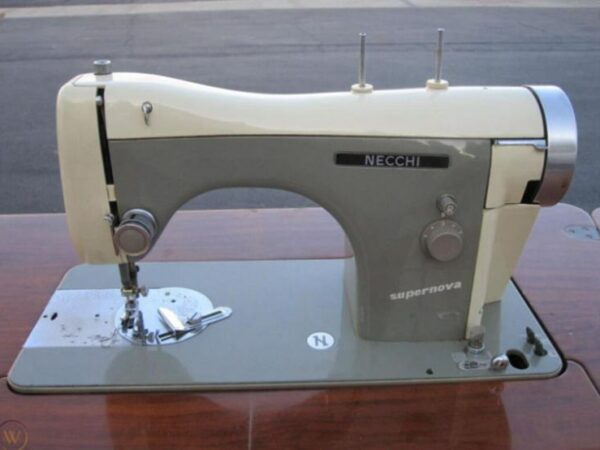
![Vintage Medicine Cabinet Styles Guide [With Pictures]](https://www.txantiquemall.com/wp-content/uploads/2021/12/Vintage-Medicine-Cabinet-Styles-Guide-600x450.jpg)
